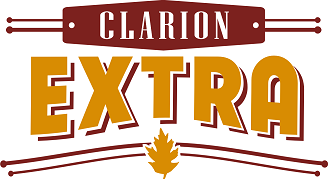From staff reports
The annual Common Nighthawk Watch by Seneca Rocks Audubon is underway and continues through early September. During those weeks, Seneca Rocks Audubon birdwatchers gather each evening from 6:30 p.m. until dusk to count the nighthawks as they migrate southward to wintering grounds in South America.
The birdwatchers usually see 10-20 common nighthawks each evening, but sometimes more than 200 pass overhead in one night. The highest numbers are usually seen from Aug. 25 to Sept. 5.
The spotters also see many other bird species, such as cedar waxwings, chimney swifts, herons, and bald eagles.
The two count areas are the Oil City Marina and the Mill Creek boat launch. Gary Edwards, a resident of Seneca and the author of Birds of Venango County, heads the Oil City count, with help from Jim Wilson, Meg and Nick Kolodick, and Russ States. Mal Hays and Larry Towse are the lead counters at the Mill Creek site. To find the Mill Creek boat launch, turn onto Fisher Road in Strattanville, and then turn left onto Millcreek Road.
Despite their name, common nighthawks are not hawks, but are related to whip-poor-wills. They mainly eat insects as they are flying, scooping them up in their wide mouths.
They’re also not as common as before. According to the National Audubon Society, they’re in serious decline in North America due to changes in land use and the overuse of pesticides. Their numbers have declined by 58-percent in North America over the past 50 years.
Seneca Rocks Audubon is a local chapter of the National Audubon Society. More information about their conservation and education activities can be found at the Seneca Rocks Audubon website or Facebook page.

